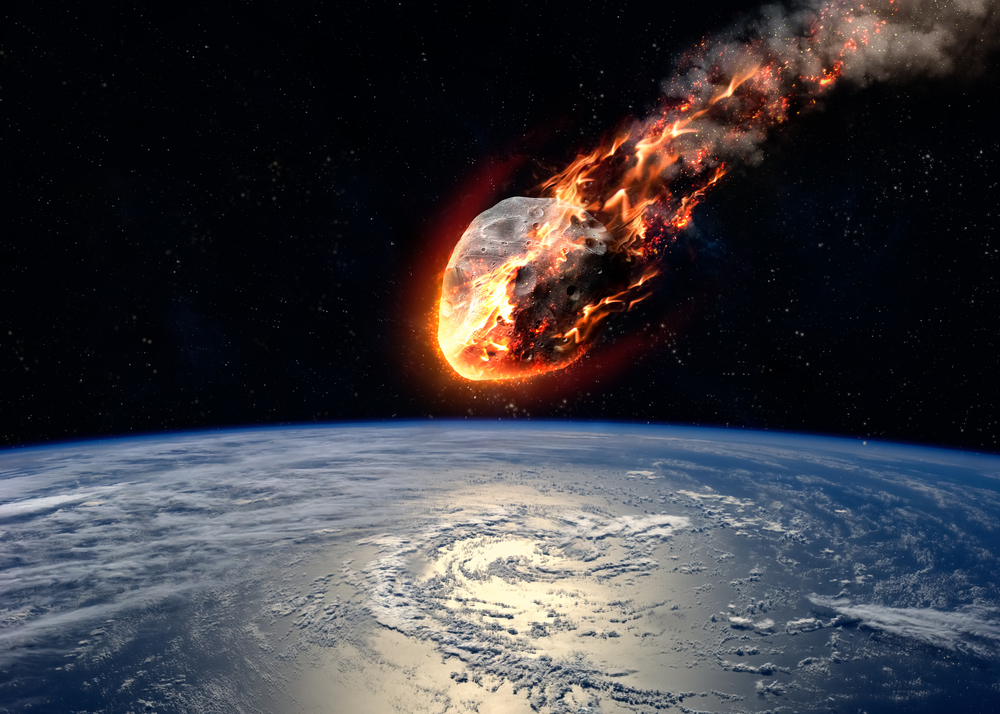How did it all start?
At the end of the Cretaceous period, 66 million years ago, the most famous and very large
What led to the extinction of the dinosaurs?
Есть несколько теорий, что привело к вымиранию. Вот две, которые ученые изучили в новом исследовании:
- An asteroid impact is one of the mostcommon versions (the so-called “Alvarez hypothesis”, who discovered the Cretaceous-Paleogene boundary). It is based on the approximate timing of the formation of the Chicxulub crater (which is a trace of a meteorite falling about 10 km in size about 65 million years ago) on the Yucatan Peninsula in Mexico and the time of extinction of most of the extinct dinosaur species. In addition, celestial-mechanical calculations ( based on observations of existing asteroids) show that meteorites larger than 10 km collide with the Earth on average about once every 100 million years. On the one hand, this corresponds to the dating of known craters left by such meteorites, and on the other, to the time intervals between the peaks of extinctions of biological species in the Phanerozoic. The theory is confirmed by the increased content of iridium and other platinoids in a thin layer at the boundary of the Cretaceous and Paleogene limestone deposits, noted in many areas of the world.

- Increased volcanic activity is anothertheory. A number of effects are associated with it that could affect the biosphere: changes in the gas composition of the atmosphere; the greenhouse effect caused by the release of carbon dioxide from eruptions; change in the illumination of the Earth due to emissions of volcanic ash (the onset of volcanic winter). This hypothesis is supported by geological evidence of a giant outpouring of magma between 68 and 60 million years ago on the territory of Hindustan, as a result of which the Decan traps were formed. Anyway, until today.
What happened to the Earth's climate?
In a new study, scientists analyzedclimate changes that occurred immediately before and after the mass extinction (at the Cretaceous-Paleogene boundary), as well as their potential connection with a major biological crisis. For the first time, experts have determined whether this climate change coincides on a time scale with its potential causes: the massive Deccan volcanism in India and orbital variations in the Earth's position. To do this, they studied the rocks of Sumaya. They paid attention to these geological rocks because of the exceptional cross-section of strata that reveals the geological history of the Earth in the period 115-50 million years ago.
 Sumayi (Spain).
Sumayi (Spain).
“The peculiarity of the Sumayya outcrops isthe fact that two types of sediments have accumulated there - some are richer in clay, and others are richer in carbonate. They alternate with each other, forming “rhythms,” says researcher Sietske Batenburg from the Department of Earth and Ocean Dynamics of the University of Barcelona. The rhythmicity of sedimentation is associated with cyclic changes in the orientation and tilt of the Earth's axis during its rotation, as well as translational motion around the Sun.
Эти циклические изменения известны как циклы Milankovitch - fluctuations in the amount of sunlight and solar radiation reaching the Earth over long periods of time. They explain the natural climate changes occurring on Earth and play an important role in climatology and paleoclimatology. “Thanks to the periodicity found in the sediments of Zumaia, we accurately dated the climate changes that occurred around the time the last dinosaurs lived,” explains Vicente Gilaber, Ph.D. and co-author of the study.
So, isotopic analysis of carbon-13 in rocks inIn combination with the study of planktonic foraminifera - microfossils, used as high-precision biostratigraphic indicators, it has made it possible to reconstruct the paleoclimate and chronology of that time in the sediments of the Sumaya rocks.
It turned out that more than 90% of planktonic foraminiferaCretaceous from Zumaya became extinct 66 million years ago, coinciding with a major disruption of the carbon cycle and the accumulation of impact glass spherules originating from the Chicxulub asteroid. As is known, strong meteorite impacts can form a thin layer of glass fragments covering most of the earth's surface. Later they turn into glass spherules.
Refutation of one theory and confirmation of another
For the past 10 years, scientists have actively argued whether there werethe hyperthermic phenomena mentioned above are caused by the increased volcanic activity of the Deccan. “Our results show that all of these events are synchronized with the Earth's extreme orbital configurations,” the experts add. This means that the global climatic changes that occurred in the Late Cretaceous and Early Paleogene were caused by the maxima of the eccentricity of the Earth's orbit around the Sun.
However, the eccentricity of the orbit, which affectedclimate change before and after the Cretaceous / Paleogene boundary has nothing to do with the mass extinction of species in the Late Cretaceous period. Climatic changes, caused by eccentricity peaks and enhanced by the Deccan volcanism, occurred gradually on a scale of hundreds of thousands of years.
“New evidence confirms that the extinction wascaused by some external factor in relation to the Earth system. For example, by the impact of an asteroid, - scientists explain. - Moreover, the last 100 thousand years before the Cretaceous-Paleogene boundary are characterized by high ecological stability without obvious disturbances. And the mass extinction of species just happened instantly within the geological timeline. "
Read more
Watch the first private crew return from space to Earth
An amateur astronomer filmed an unknown body falling on Jupiter
The development of AI has reached a critical point. Scientists are asking to take control of technology
Orbital eccentricity is a numerical characteristic of the orbit of a celestial body (or spacecraft), which characterizes the "compression" of the orbit.
Sedimentation is the settling of dispersed phase particles in a liquid or gas under the action of a gravitational field or centrifugal forces.
Milankovitch cycles repeat every 405,000, 100,000, 41,000 and 21,000 years.